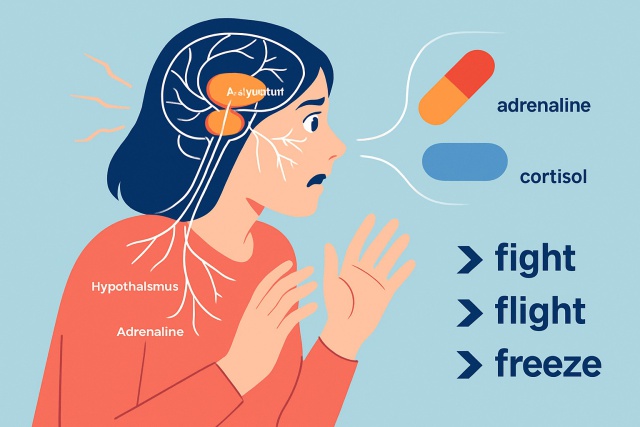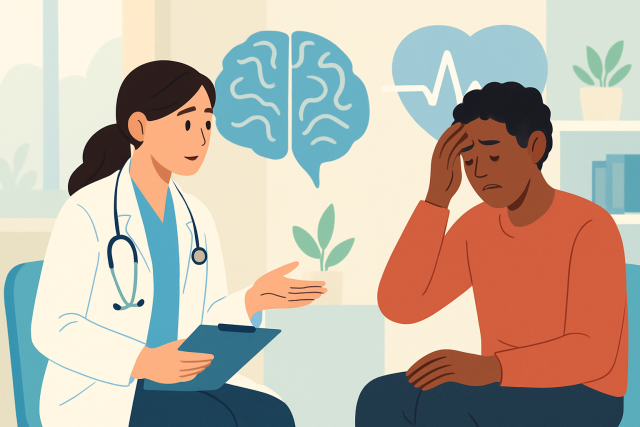
Understanding Anxiety Paralysis and Its Physical Effects
Anxiety paralysis can leave you frozen in moments of intense fear. Learn what causes this, its physi...
Shyness disorder is more than just feeling a bit jittery around people—it’s an anxiety-related condition that can really throw a wrench in everyday social interactions. People dealing with this often struggle to speak up or share their thoughts, which can make it tough to connect.
Shyness disorder isn’t just your garden-variety timidness. It’s on a whole different level of intensity and persistence. Many individuals feel shy every now and then, but this disorder covers social situations with a heavy blanket of fear. It pushes people to avoid them in a way that can really disrupt their daily routine. It focuses mainly on social fears and that gut-wrenching awkwardness instead of the broader anxiety found in other disorders.
Shyness disorder is much more than simply being quiet or reserved. It comes with symptoms that can really throw a wrench in personal and professional life. Usually it sneaks in during childhood or adolescence and can linger into adulthood. People dealing with this disorder might avoid eye contact or steer clear of social gatherings not because they don’t like people but because their fear of embarrassment or rejection hits them like a ton of bricks.
Shyness disorder shares some common threads with social anxiety disorder but tends to show up as milder, manageable social awkwardness that can still affect daily life. Social anxiety disorder is a clinical condition marked by powerful fear and often outright avoidance of social situations.
Avoiding social situations can often feel like the easiest fix when shyness kicks in and offers quick relief from anxiety. In my experience, regularly dodging these events tends to feed fears and erode confidence. It traps a person in a tough revolving door. The brain starts acting like social interactions are threats. This only cranks up stress and pushes isolation deeper. Over time, this avoidance slowly shrinks social skills and slams the door on opportunities. It makes the whole situation spiral downward instead of getting better.
Steering clear of tricky situations might give you a short burst of relief, but in the long run, it usually just fans the flames of fear and chips away at your confidence. Taking little steps forward and summoning a bit of gentle courage tends to be the secret sauce for slowly piecing your social life back together.
Managing shyness disorder isn’t about dodging social situations like the plague. Instead it’s a blend of practical and manageable steps that gently build confidence and help ease anxiety. Everyone’s journey is a bit unique but usually a mix of gradual exposure, relaxation techniques, cognitive strategies and solid support systems can make joining social activities feel less daunting.
The first step in managing shyness disorder is simply recognizing it—without beating yourself up or diving into harsh self-criticism. Becoming aware of it is like flipping a switch that helps break those pesky harmful patterns, letting you view shyness more as a challenge to tackle rather than some fixed character flaw. Embracing it gently eases that nagging inner tension.
Building up your time and ease in social settings bit by bit helps your brain dial down its usual over-the-top reaction to social fears. Start off with low-stress moments like hanging out with one trusted friend and slowly ease into small groups or local activities.
Physical symptoms like a pounding heart or sweaty palms often tag along with shyness disorder and make anxiety hit harder than you would like. Taking a moment for diaphragmatic breathing—that is, those deep breaths that puff out your belly—can really help slow your heart rate and calm your frazzled nerves. Mindfulness techniques gently nudge you to stay rooted in the present moment and tend to ease stress before and during those nail-biting social situations.
Confidence often starts to take root when you dip your toes into basic social skills in relaxed low-pressure settings. Kicking things off with simple greetings or polite questions and genuinely tuning in through active listening lays down a firm foundation for navigating trickier conversations down the line.
Negative thoughts fuel shyness and convince you that social situations will go sideways. Challenging those gloomy ideas with positive affirmations and a perspective shift can really change the game. For instance, instead of thinking "Everyone will judge me," try flipping it to "Some people are kind and genuinely want to get to know me." That mental switch usually paves the way for calmer and more confident interactions.
Spending time with supportive friends, family or peer groups creates a safe space to practice social skills without the fear of harsh judgment. These settings gently nudge you forward by offering kindness, constructive feedback and the comfort of shared experiences.
When shyness starts getting in the way of your everyday life or self-help tricks aren’t doing the job, it can be worth chatting with a mental health professional. Therapies like cognitive behavioral therapy (CBT) offer straightforward tools to identify what sets you off and challenge negative thoughts. They also help you gradually build up your social skills with a pro by your side.

These myths often lead to misunderstanding and stigma that can unfortunately make people feel even more isolated. Research reveals that shyness disorder is a tangled blend of genetic, neurological and environmental factors.
Weaving these habits into your daily routine can really pay off, leading to lasting boosts in social confidence and an all-around better quality of life. It’s worth remembering that managing shyness disorder isn’t a magic fix but a process that calls for ongoing effort and a generous dose of self-compassion.

Anxiety paralysis can leave you frozen in moments of intense fear. Learn what causes this, its physi...

Stop anxiety before it begins with seven expert-backed strategies designed to help you stay calm, fo...

Obsession with fire can be a perplexing and risky behavior. Learn what it means, why it happens, and...

Explore a complete guide to differential diagnosis for anxiety, uncovering conditions behind symptom...